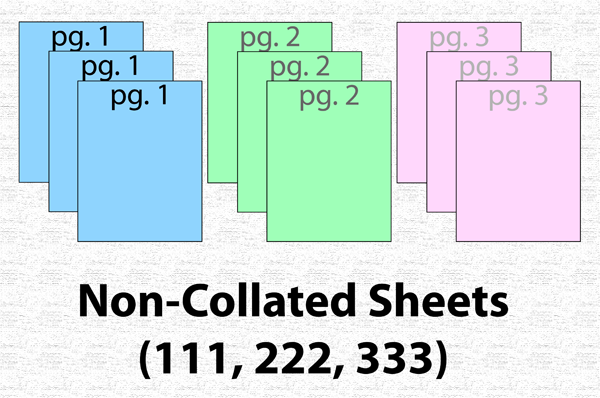

On top of this, it can also be useful to print uncollated if you do not plan on sharing that much information. For example, note pads that are bound together with a padding compound where sheets can be ripped away are not considered collated as the entire product consists of the same printing. First, not all types of bound printing are considered collated.

However, this does not mean that uncollated printing has no benefits. This will help cut down on your own preparation time if you request for collate printing. On top of this, collate printing helps to keep your order organized if you have a specific arrangement or order that you require the materials to be in. This is commonly used with color copies where the print copies can be collated even without being fixed together. Benefits of Collate PrintingĬollate printing is common when you are making catalogs, booklets, magazines, or any other types of different multi-page products. It would therefore be crucial for you to have a better understanding of how the print provider approaches both types of copies before you confirm your project. This might seem similar, but the terms are commonly used during discussions on the different specifications of the print job requested. Simply put, your print media will not be put together to make sets. Now that you know what collated copies refer to, uncollated copies refer to the opposite – print media that has copies of the sheets needed separate and not arranged in any order. What Can You Expect from Uncollated and Collated Copies? This will most commonly be used when discussions are in place about preparing manuals, books, catalogs, or collated color copies. So what does collate mean when it comes to printing? When used by a printing service, collating means putting together different sheets of print media or different parts to create a set. However, the meaning changes slightly when used by a printing professional. Collate is a word that many people have experience with – generally known as a verb to describe collecting, arranging, or assembling items in a specified order.


 0 kommentar(er)
0 kommentar(er)
